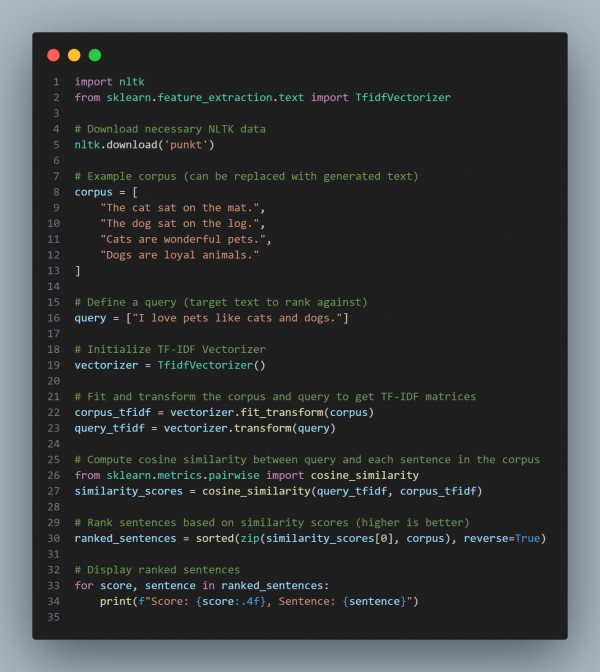To use TF-IDF values from NLTK for generative text ranking, you can compute the TF-IDF of words in your corpus and then rank sentences or generated text based on their relevance to a target query or context. Here is the code snippet which you can refer to:

In the above code, we are using the following:
- TF-IDF Vectorizer: The TfidfVectorizer from sklearn computes TF-IDF values for the corpus.
- Cosine Similarity: The cosine_similarity function is used to compare the query's TF-IDF representation with the corpus to calculate similarity scores.
- Ranking: Sentences from the corpus are ranked based on their similarity to the query.
The output of the above code would be:

Hence, this ranks the sentences based on how similar they are to the query, which can be useful for ranking generated text in a relevant way based on a given context.
 REGISTER FOR FREE WEBINAR
X
REGISTER FOR FREE WEBINAR
X
 Thank you for registering
Join Edureka Meetup community for 100+ Free Webinars each month
JOIN MEETUP GROUP
Thank you for registering
Join Edureka Meetup community for 100+ Free Webinars each month
JOIN MEETUP GROUP